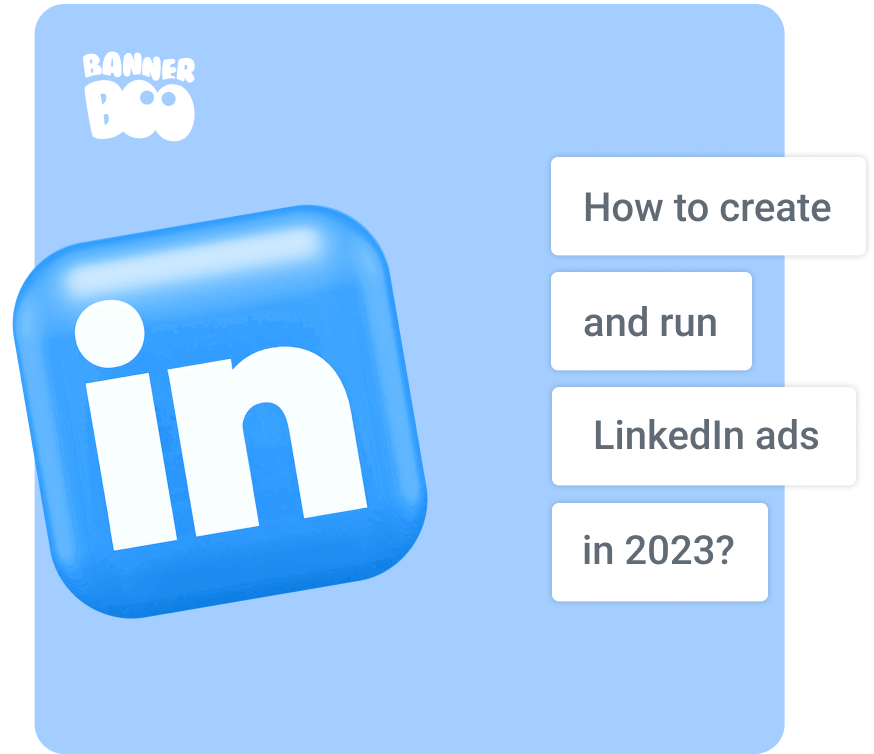
LinkedIn is one of the most popular marketing platforms for B2B and B2C businesses. Marketers note that only this social network has such a concentration of specialists, experts, and top management representatives who have a direct impact on the development of many industries. LinkedIn advertising is more expensive than Facebook and Instagram, but its main value is detailed audience targeting based on position, job, industry, education, and other important attributes. This allows brands to target people from specific industries or companies, which is really worth the bigger investment.
Consider analyzing whether your advertising campaign aligns with your business's marketing strategy before launching it. Without careful planning and understanding of the target audience, it is very difficult to create advertisements that will hit the target.
All the rules for creating effective advertising, which you have heard before, also work on LinkedIn. This platform has received the status of a highly professional network that has united millions of people according to the specifics of their interests and professional abilities. Among platform users, four out of five participants have the authority to make or influence business decisions.
According to Searchenginejournal, LinkedIn has more than 706 million members in more than 200 countries.
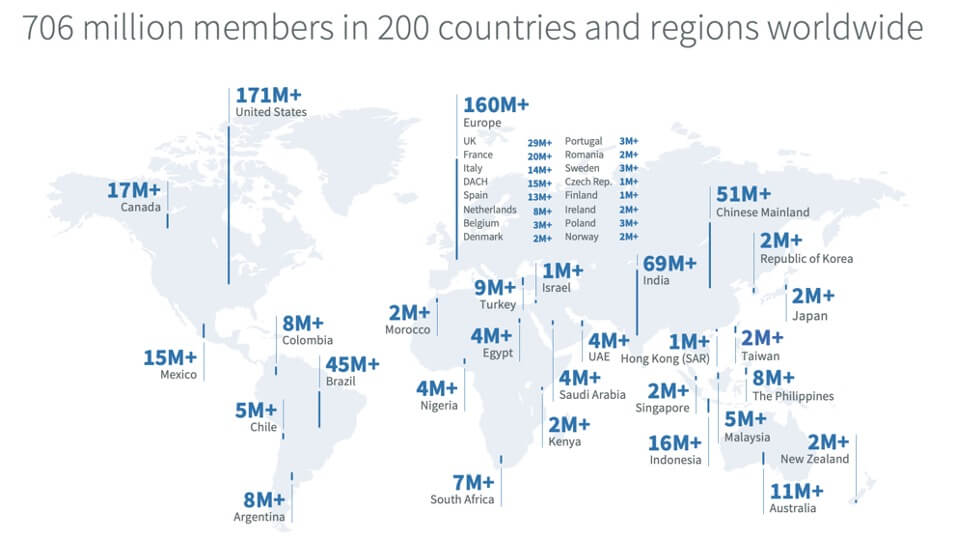
* material from the website www.searchenginejournal.com
What kind of audience can you find on LinkedIn?
Users of the platform usually:
educated, wealthy and career-oriented;
focused on educational opportunities and networking, as well as investing in their development;
leaders, influential personalities, decision-makers, managers, administrators;
the largest segment has an average age of approximately 25–34 years;
earn an average of more than $75,000 per year;
four out of five LinkedIn users manage business decisions.
We have created a guide article for anyone who wants to start advertising on LinkedIn. It describes in detail the types of advertising and the goals that can be achieved. Walk through the entire LinkedIn ad creation process and get tons of tips to increase conversion rates and maximize your reach.
Promotion of useful and creative content is a logical strategy for the development of any social platform. Of course, monetization is important for owners, and for participants it is an ability to communicate with selected audience segments. In this case, both sides of the cooperation will win.
It's no secret that advertising on LinkedIn is significantly more expensive than advertising on Facebook or Google. And it's true. One reason for this is that companies are not using the full potential of the ad network, choosing inappropriate combinations of ad formats and bids.
Focus on launching your sponsored content correctly when you try LinkedIn advertising for the first time.
Sponsored content ads have a low risk of failure and can reach a wide audience. They work well with people from your professional environment and can reach the right target audience by interests and companies. Sponsored content is not the cheapest type of LinkedIn advertising, and certainly not the most expensive. But it’s very versatile: you can launch a video, a carousel or a lead form for potential customers.
LinkedIn ads, like most targeted advertising, work on an auction basis. In other words, there is a list of advertisers vying for the opportunity to display an ad to a targeted audience by offering competitive pricing and engaging, informative creative content.
First, you choose the rules by which you need to find an audience, then how to communicate with business professionals around the world, and how exactly to draw their attention to the company's offers. Advertisements can appear in users' news feeds, right sidebars, or through LinkedIn's messaging. More than 200 factors are available for every advertiser to create perfectly accurate ads.
When defining an audience, LinkedIn provides more than 20 different attributes: the name of the company where the desired user segment works, team size, participant groups, user interests, educational institutions, job title, experience, skills.
What are the benefits of LinkedIn advertising?
wide coverage of more than 13% of the entire world population (according to Hootsuite);
4 out of 5 LinkedIn members influence decision-making (according to LinkedIn);
the average return on investment in advertising is 17.60% (higher than Google Ads).
LinkedIn ad targeting helps you run a successful ad campaign to get more attention and increase conversions.
Before you can run your first campaign, you need to create a LinkedIn page and a Campaign Manager account. Then follow the step-by-step algorithm and set up effective ads.
A LinkedIn business page is a free and easy way to promote your brand on the platform. All you need is a LinkedIn account and a verified email address (the system checks if you have the right to create pages on behalf of the company).
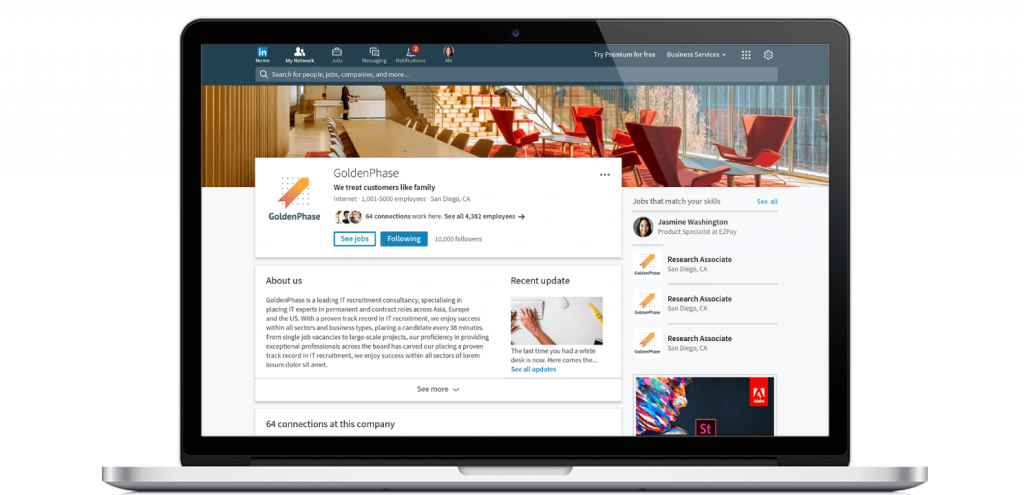
* material from https://business.linkedin.com
Why is it important to develop a LinkedIn page?
it is impossible to launch sponsored content campaigns and messages without it;
page posts will improve your LinkedIn ad auction bid (relevance ranking helps marketers who regularly publish content that gets a lot of clicks, likes, comments and shares).
Campaign Manager is an advertising platform for managing LinkedIn ads (kind of like Facebook Ads Manager).
After the account is created, you need to set it up:
choose an account name, company page and currency;
to change the name, click under the account name and enter a new name;
LinkedIn will pull up the information you need and available for linking pages;
if you need to change the company page, click the "Change" button;
after viewing and updating the information, click "Agree and create an account";
you will then be automatically redirected to the campaign creation page in Campaign Manager.
To do this, go to Campaign Manager, select the "Create" option, and then select the "Campaign" tab.

* material from the HubSpot website
We recommend naming the campaign right away so that it is easy to understand the purpose of the ad during analysis. The title is only visible inside Campaign Manager and is not available to potential customers.
A correctly chosen goal is the key to the effective work of LinkedIn's advertising algorithms. It helps advertisers build advertising campaigns around specific business goals.

* material from rahulogy.com
What are the purposes of advertising on Linkedin?
website visits: draw attention to your resource or landing page;
engagement: works to get likes, comments and reposts, as well as visits to other social media platforms and sites;
video views: share your business story, product, or a day in the life of your company in a video.
Goals can be effectively used for:
attracting potential customers on LinkedIn using forms;
conversions from the site: encourage to download an e-book, sign up for a newsletter, get advice or buy a product.
communications with job applicants: spread information about vacancies in the company.
Now that you are aware of all the goals, you should choose the most suitable one and start creating an advertising audience.
LinkedIn has a well-thought-out targeting functionality, enabling advertisers to deliver highly targeted ads to their desired audience. Each advertiser decides from 20 different attributes of the audience: interests, skills, abilities, position and company size, etc. A brand can clearly define who it needs to reach with its advertising, and this factor makes advertising campaigns on LinkedIn highly effective, especially for B2B marketing.
LinkedIn has also created template audiences based on various attributes. If you are just starting out, you can immediately pick one of the ready-made audiences for your campaign and save time.

* material from rahulogy.com
When you select an audience, LinkedIn will automatically narrow it down by adding relevant attributes: job titles, team roles, interest groups, education, skills and abilities, and more. Choose the ones that are relevant to you.

* material from rahulogy.com
Each advertiser can add even more attributes to the target audience to expand their reach by selecting the Add More Attributes / + options.
If the desired target audience is not in the LinkedIn Audiences list, you can create an entirely unique set based on specific campaign attributes.
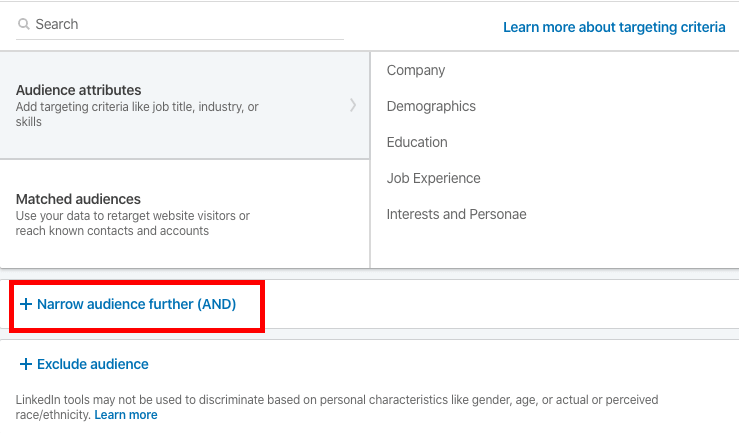
* material from rahulogy.com
Avoid targeting too broadly and narrow your audience to reach the most relevant prospects.
By the way, we recommend saving audiences to use them again in new advertising campaigns. It is convenient.
Next, you need to choose an advertising format that will meet the advertising goals as much as possible.
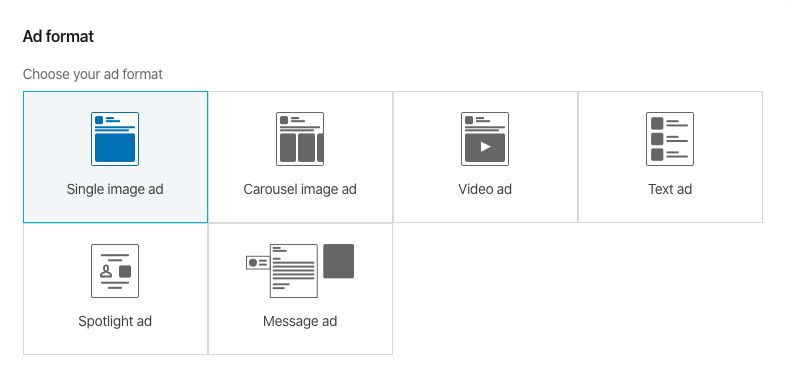
* material from rahulogy.com
LinkedIn has 8 ad formats, but depending on the target you choose, certain types will be available to you and some will not.
Choose:
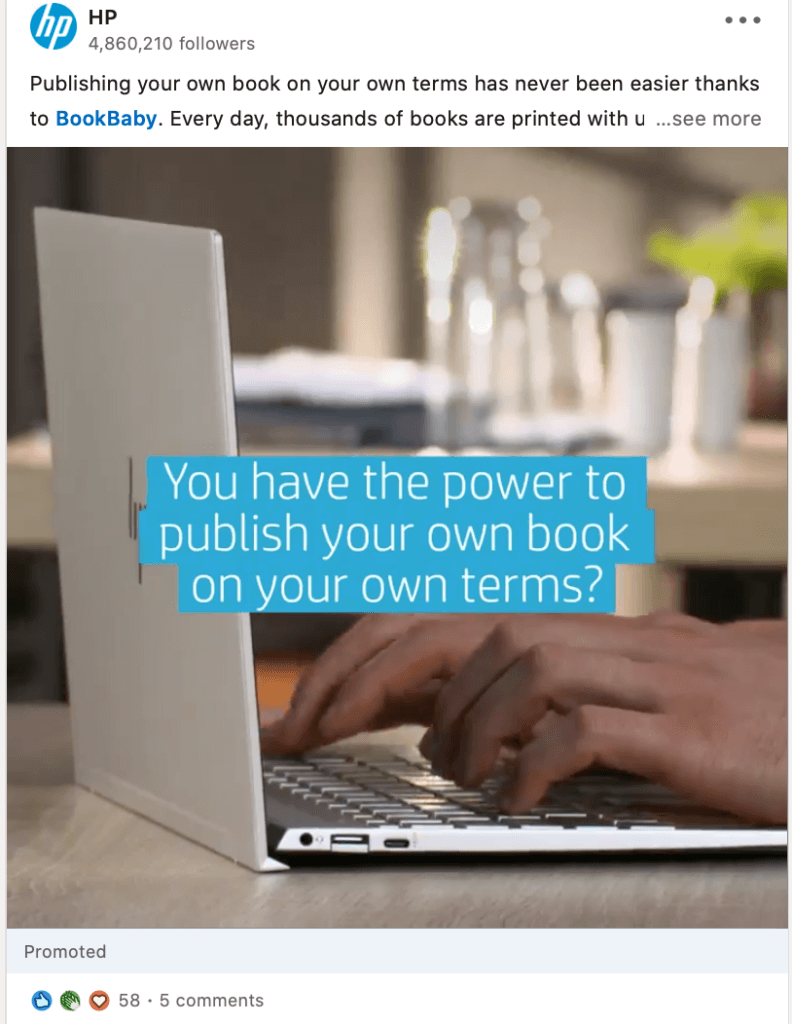
* material from https://business.linkedin.com
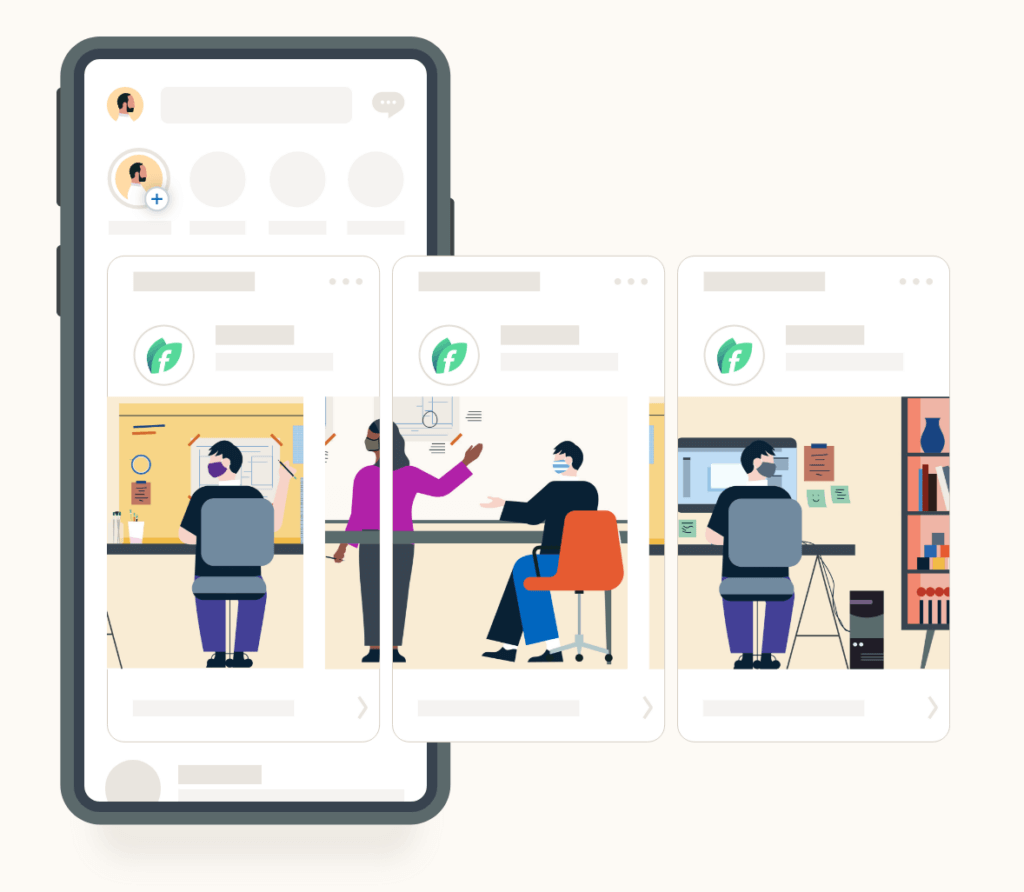
* material from https://business.linkedin.com
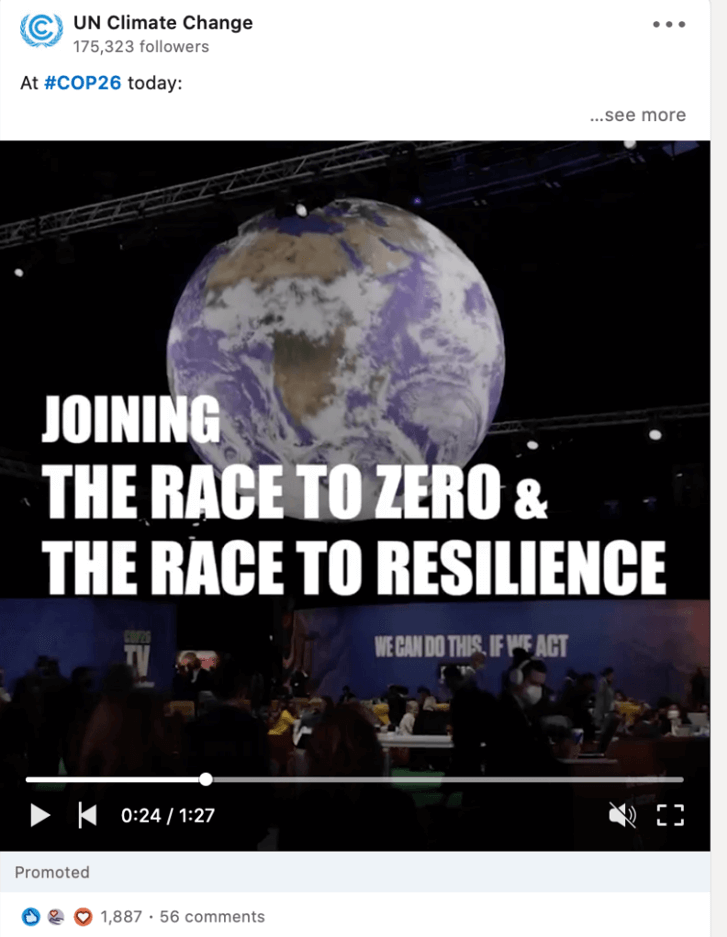
* material from https://business.linkedin.com
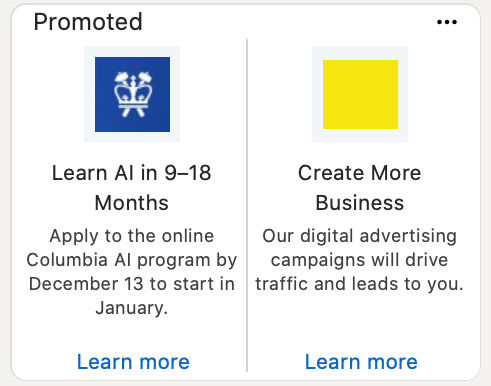
* material from adespresso.com
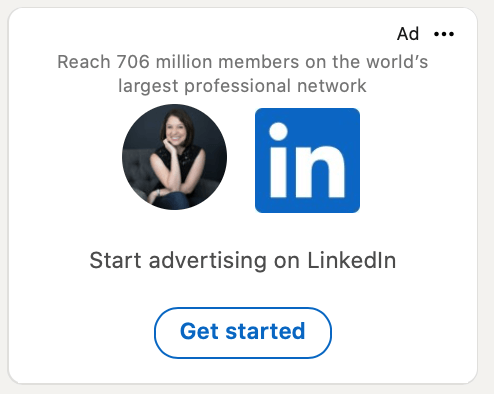
* material from adespresso.com
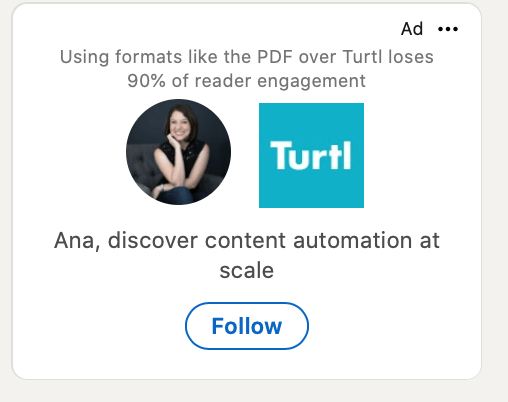
* material from adespresso.com
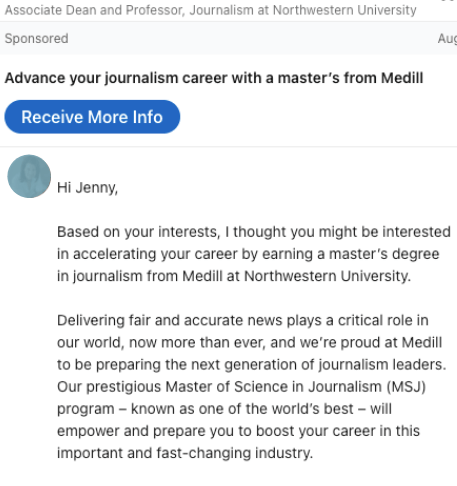
* material from lairedigital.com
When selecting an ad format, you can check the predicted future results of the advertising campaign. The analysis will help you choose the relevant ad format based on your campaign budget and the goal you want to achieve.
You can advertise only on the LinkedIn network, and you can add another Audience Network place, which will give the campaign more reach and spread information on third-party partner platforms. This option is not available for all types of ads, all options will be specified during the creation of the ad.
In addition, if needed, you can disable or block certain categories, applications, and sites from showing ads there.
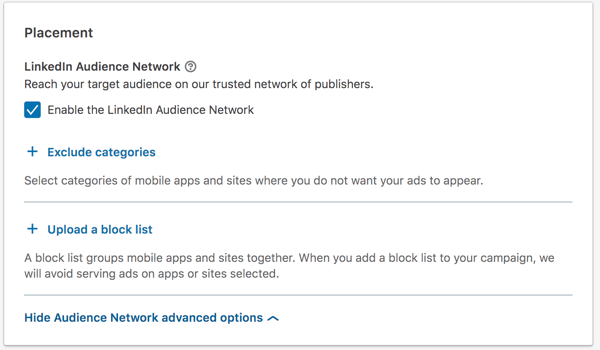
* material from the HubSpot
At this stage, you need to configure the type of advertising that you have chosen for your campaign. Let's start with the "Create a new ad" button.

* material from the HubSpot
Next, you'll be taken to a tab titled "Create a new [Ad type of your choice] for this campaign" where you'll place your text, images, and preview different display formats (depending on the placements).
What are the requirements for creating an effective advertisement?
the image must be square (100×100 / 1080×1080px) or rectangular (1200×600px), in .jpg or .png format, 2 MB or less in size;
the headline (key message) that your audience will see cannot exceed 25 characters;
the ad description (main text) can contain up to 75 characters;
your destination URL that your audience will go to when they click on your ad must be relevant.

* material from the HubSpot
After clicking the Create button, you will be returned to the previous Campaign Manager screen. And then you can create another ad again that has a different text, image or URL. Once the basic parameters are filled in, the system will prompt you to start moderating your ad and choose how LinkedIn's ad algorithms will display and rotate options if you've created more than one.
LinkedIn reviews each campaign ad, so be prepared that your ad won't run right away.
An active CTA is the key to a high click-through rate (CTR). Be direct and clear in your call-to-action. Use phrases like "Download the eBook now" or "Order free samples". Performance will be much greater.
Include special value in your ad texts. By doing so, you can significantly increase the chances of users clicking on your ad. Even a small insert of "20% off" or "Sale ends today" sends a clear signal that the offer is limited and action must be taken immediately.
Constantly test different formats, texts, images, СTAs for different audiences. Each campaign has the option to create multiple ad variations to find the perfect format for your potential customers.
The next step is to set the budget, schedule, and bid parameters that work best for your ad campaign.
We recommend setting a daily budget to check whether customers will interact with the ad and whether they understand the key message. Test and analyze the results of each ad, so you don't invest in campaigns that don't resonate with the needs of your target audience.

* material from rahulogy.com
Choose a start and end date for the advertising campaign, or specify that the ad will be displayed continuously.
Each advertiser can choose one of three options:
automatic bidding (allows LinkedIn's advertising algorithms to determine on their own what amount will bring the maximum number of clicks, impressions, or conversions);
the maximum cost-per-click (CPC) you'll pay each time someone clicks on your ad. LinkedIn has a lot of experience running advertising campaigns on various topics, so be guided by algorithm recommendations, especially if these are your first advertising campaigns;
max bid with pay per 1000 impressions (CPM), where you pay every time 1000 people see your ad (by the way, this view is not available on LinkedIn Audience Network).
When deciding between CPC and CPM, it is important to keep your end goal in mind. If your goal is to maximize ad impressions, then CPM may be the better choice. However, if you are looking to drive more traffic to your website or generate leads, then CPC is the ideal format.
It remains to press the "Launch" button to activate the campaign. Now LinkedIn moderators will check it and, if everything is fine and the message does not violate the rules of advertising activity, will launch the campaign for display.
Just running an ad isn't enough. It is necessary to analyze the obtained results, adjust advertising strategies with the help of analytics in Campaign Manager.
Get information about total impressions, clicks, social activities (which are generated organically). Using this data, the marketer will be able to edit their ads, refine targeting, adjust budgets, and turn off ad options based on performance.
LinkedIn's advertising platform announces a variety of ad formats for advertisers to choose from.
Sponsored content, known as native advertising, serves ads to audiences on LinkedIn. The platform adds a “promoted post” label so that anyone can distinguish them from regular content. Active type for carousel, single image ads, and video content.
By using sponsored content, you will be able to:
target the most relevant audience using accurate user profile data;
reach an interested audience with the help of native advertising in a professional network;
attract potential customers, create a recognizable brand and develop a community.
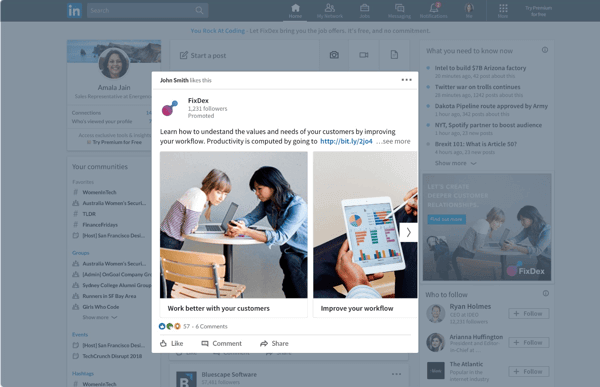
* material from https://business.linkedin.com
Advertising message exchange (formerly known as Sponsored InMail) allows you to send advertisements to your audience in their "inbox".
LinkedIn limits the sending of such messages and ensures that a representative of the target audience does not receive any of your advertisements more than twice in a month. 89% of consumers consider this type of communication the best, but only 48% of companies use it to interact with customers.
With the help of advertising messages, you can:
communicate directly with your potential customers by messaging to encourage action;
stimulate the formation of positive emotions of interaction with the company better than traditional direct mail;
analyze the actions and activity of different representatives of the target audience in order to adjust the attributes.
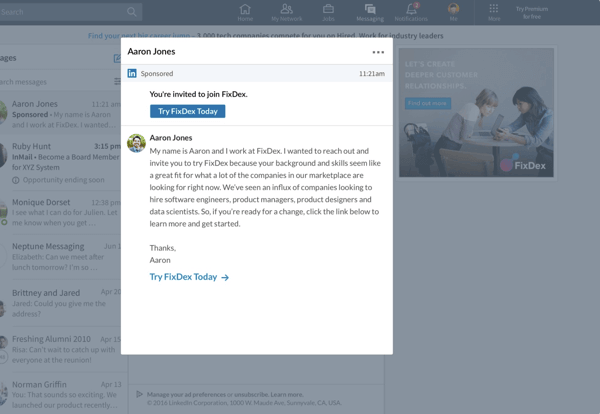
* material from https://business.linkedin.com
They appear in the right sidebar of LinkedIn and have a specific, personalized format. In fact, it is like addressing a person, so the interaction rates are very high. But there is also a downside, dynamic ads use LinkedIn profile data: photo, company name, and job title, so users can limit access to them.
LinkedIn offers several advertising formats for advertisers to choose from:
follower ads: advertise your LinkedIn page or website;
central ads: drive traffic to your resources or drive action, such as registering for an event or signing up for a new product demo;
job postings: increase the number of candidates for the jobs you want.

* material from https://business.linkedin.com
They appear at the top and right of the LinkedIn feed and are great at attracting leads from professional demographics. Considering that 58% of marketers consider the text format to be the most convenient, the opportunities cannot be neglected. And the budget can be comfortable for any size of business.
Using text ads helps:
create your own ads and launch a campaign in minutes;
adjust communication with the audience;
save the budget because you will pay only for ads that work.
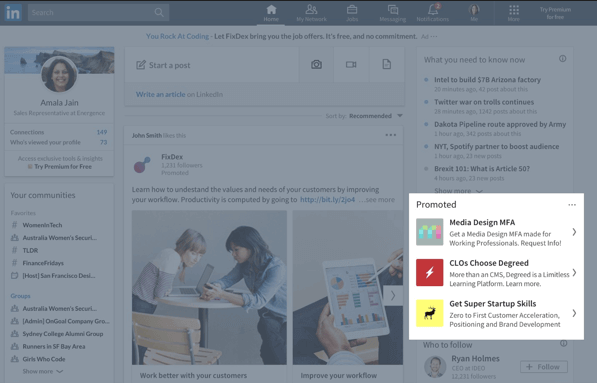
* material from https://business.linkedin.com
Advertising campaigns on social platforms can always be improved and made more effective. Remember, the audience, needs, and content are constantly changing, and LinkedIn itself is constantly evolving and offering new advertising opportunities.
How to create an effective advertisement that will definitely be noticed among the news and professional networks? We have collected useful tips for any business.
As the business evolves, so does the audience. New customers arrive, with different values, needs or requests, and this data should be actively used when adjusting advertising strategies. A detailed study of the targeting audience allows you to effectively offer the right goods and services at the right moment (when users are most likely to convert).
For example, these strategies can include remarketing: running ads to audiences that have already interacted with your brand/content before, instead of showing ads to people who don't know anything about you.
Segmentation is the first step to personalizing ads. It is worth immediately dividing customers into groups to know exactly the needs and requests that can be revealed in advertisements on LinkedIn. Your chances of engagement and conversion rates will obviously be higher.
Finding ideas for implementation is quite a complex process. You can get inspiration and collect data both from existing advertising networks (the same as Facebook or Google) and from competitors' LinkedIn ads.
The obtained data can be a good basis for planning LinkedIn advertising, and will also help to save time, possibly repurpose content and improve campaign results. Even if you can't access analytics, you can at least see what types of competitor ads are generating engagement, comments, and reactions.
Be sure to create advertising campaigns that meet the needs and goals of the target audience. Also analyze the results of the activities carried out to generate data about effective campaign formats and then use only them. Think about the relevance of the content and its usefulness for the target audience, this strategy is most suitable for modern business.
Each element of the advertisement should correspond to the visual concept of the brand. The content you share must be compatible with the selected ad type you are creating. The ad should make you want to read / see more / click on a button / open a form to fill out, etc.
Consider all the elements of the ad:
colors;
fonts;
language and texts;
CTA placement and style;
images and videos;
GIF files or HTML5 banners.
A/B testing is not difficult at all. Test visuals, language, and ad to determine what your target audience on LinkedIn finds exciting. You can test different versions of the same ad to see what factors help or hinder its success.
You can change the text in the title, the image, adjust the attributes of the target audience or update the bid type — just don't do it all at once. Because you won't know which factor will play a key role.
Closed offers are those that require certain information in exchange for an offer. For example, you download the "Checklist for Creating Effective LinkedIn Ads" guide in exchange for your email address. For this, the Lead Gen format is used, which comes with the functionality of pre-filling LinkedIn profile data (then the participant can share information in a matter of seconds).
LinkedIn uses objective auction-based pricing when it comes to advertising. In fact, you only pay for the achievement of specific marketing goals, which are selected during the creation of an advertising campaign.
LinkedIn will automatically display lower-performing campaigns less often, so it's worth minimizing your spending on them. At the same time, investing more resources in successful variants of advertising campaigns is a good strategy for achieving marketing goals.
LinkedIn makes it easy and convenient to monitor the results of advertising in the Campaign Manager dashboard (in the "Campaign Performance" section). There are a lot of analytics, various charts, data on clicks, costs, and CTR.
The LinkedIn platform is a valuable channel for communication with professionals, experts and decision-makers. Besides, the social platform is also an active tool for creating a flow of traffic to your resource. Here, every advertiser has many more opportunities than you could imagine.
LinkedIn has a powerful advertising platform. If your advertising strategy already uses PPC channels, it's easy to strengthen your presence on Facebook, Twitter, or Google simply by adding LinkedIn to this list.
Advertising on LinkedIn is very simple:
create a new advertising campaign;
set the goal of advertising;
choose targeting conditions and advertising format;
specify the advertising place;
specify the advertising budget and advertising display schedule;
write an advertising text and upload an image;
analyze the results and adjust the advertising strategy for the next period.
Remember that advertising platforms are constantly changing and improving. Be on trend and be sure to follow all updates to be one of the first to apply them for your own business.
All advertising activities on LinkedIn are paid. That is, to launch advertising, you will definitely need an advertising budget. You can post any posts on your personal page and business account of the company without payment.
LinkedIn Ads work in five steps when you have LinkedIn Campaign Manager:
choose a goal (awareness, interaction with content or conversions);
specify audience targeting criteria;
choose an advertising format (sponsored, message, dynamic, or text advertising);
set an advertising budget;
analyze the results of your advertising.
Most LinkedIn ads belong to one of four categories:
sponsored content;
sponsored posts;
text ads;
dynamic ads.
The maximum cost-per-click (CPC) bid is the price you'll pay for each click on your ad. LinkedIn will offer a range of bids based on your budget and the competition in your industry. The more advertisers bid on a similar campaign, the higher your bid should be.
Like most PPC platforms, LinkedIn advertising costs depend on many factors: type of ad, ad format, competition, market situation.
Typically, CPCs range from $5-$7, less than $10 for 1,000 impressions, and around $1 (or less) for each sponsored post. The data may differ depending on the specifics of the business.
Advertising targeting on LinkedIn helps to conduct a successful advertising campaign — communicating only with the right audience segments. The process of choosing the target audience is the same, no matter what type of advertising you choose.
LinkedIn provides more than 20 different audience attributes and targeting categories that you can choose from: company name and size, member groups and interests, educational institutions, job title, experience, knowledge and skills, etc.
Matched Audiences are a set of targeting options that allow marketers to combine their own business data (such as an existing contact list) with LinkedIn user data. It includes retargeting, lookalike audiences, account targeting, and individual contact lists.
Choose BannerBoo! With us, the process of creating advertising will become simple and convenient: